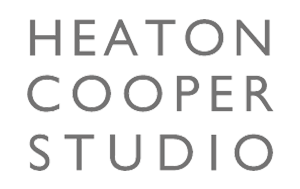Our Artists

Alfred Heaton Cooper was born in Bolton in 1863, the eldest of five children.
His father, William was a cashier in Cannon’s cotton mill, and his mother, Alice, was a weaver there.
Alice could neither read nor write, but she was to prove a driving force behind her children’s upbringing and education, so that they succeeded in careers far beyond their background. Daniel became a photographer and moved to Boston in America, Thomas became an instructor in drawing at Cleveland School of Art, Ohio, USA, William emmigrated as a groom to Australia, and Edith married the regional editor of a French newspaper in Brittany.
Click view prints by Alfred

I find the medium of words a very difficult one by which to express
infinite feelings, so I try to do it in paint – W Heaton Cooper.
William Heaton Cooper’s first memory was of dipping one of his father’s brushes into the beck that ran down from the Old Man and past their home in Coniston. He spread its bristles over a rounded green boulder veined with lines of white quartz. He was three.
Partly in an attempt to get noticed by his father, Heaton – as William became known – continued to follow the great man’s example by drawing everything in sight. On the big day, when he was thirteen, that his father presented him with some paints, his enduring memory was of trying to paint the waterfall Skelwith Force and, he claimed, of not doing very well.
Click view prints by William

Everyone who met Ophelia Gordon Bell was struck by her. Even if they did not know of her artistic skill, they were witnesses to her great vitality and kindness. And on the day, in 1940, that she and her aura entered William’s studio for the first time, with hair streaming wet from the rain, all William had to do was what any living, breathing bachelor would have done and notice it.
Born in London in 1915, the daughter of society animal painter Winifred Joan Ophelia Gordon Bell, she knew that she wanted to be a sculptor by the time she was 15. So she went to Regent Street Polytechnic Sculpture School in London. There she was taught by the eminent names of the day to work with stone, wood, metal, clay and plaster.
Click view prints by Ophelia

‘We are there with our noses pressed up against the snow and rock and ice.’
Ben Tufnell – Tate Britain
‘When it is going well,’ Julian Cooper says of his craft, ‘the physical act of painting moves at the same pace as the thinking process … This is very satisfying but it does not always happen. Often it is a grinding struggle to get it right.’
Julian has grafted to take his place among the most accomplished of mountain painters. His approach is distinctly that of a climber. ‘You’re handling raw material,’ he has said in the past, ‘dealing with a vertical surface. A vertical crag is just like a huge abstract painting, processed by time.’
Click view prints by Julian

"Where possible I work from life, using lighting to create the scene, but sometimes the transitory nature of the subject, or its placing, involves working from photographs. One painting follows another, then it doesn’t and I have to cast about and see what comes up. I have been working like this for nearly 20 years after moving into an old house built in 1712. The original features such as worn cellar steps, beams and spice cupboards made me want to paint them." - Linda Cooper
Born in Newcastle-upon-Tyne in 1947. Lived and taught in London until 1975 and then moved to the Lake District. Married to the painter Julian Cooper and lives and works in Cockermouth, Cumbria.
Click view prints by Linda